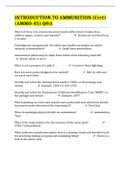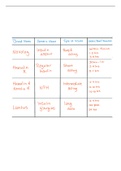Resume
Samenvatting CAPI
- Cours
- Établissement
- Book
Complete samenvatting van de cursus Comparative Analysis of Political Institutions (CAPI). Alle hoorcolleges plus samenvattingen van het boek van Comparative Politics van Caramani. Hoofdstuk 1 3 4 5 10 23 24 Bevat ook samenvattingen van alle voorgeschreven artikelen in collegejaar 20...
[Montrer plus]













